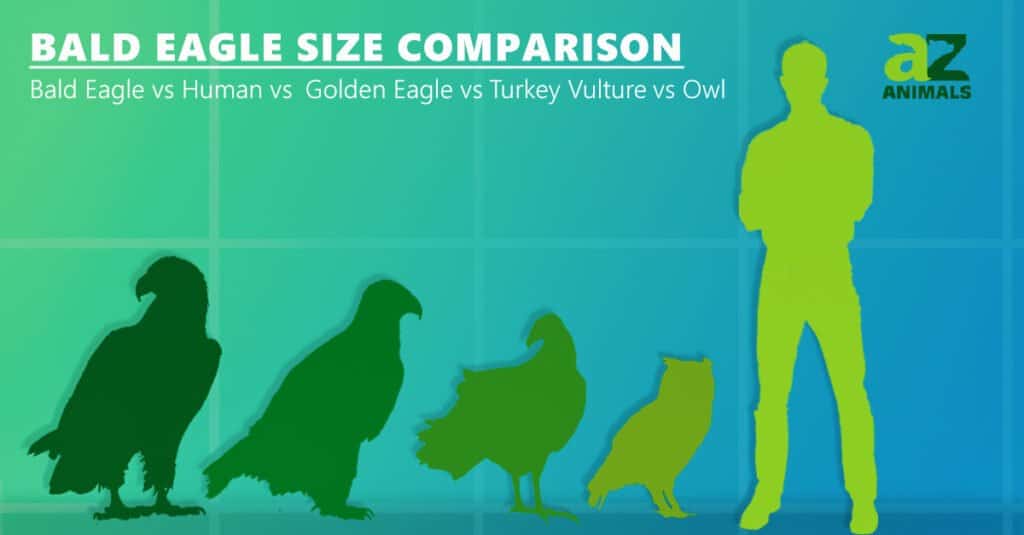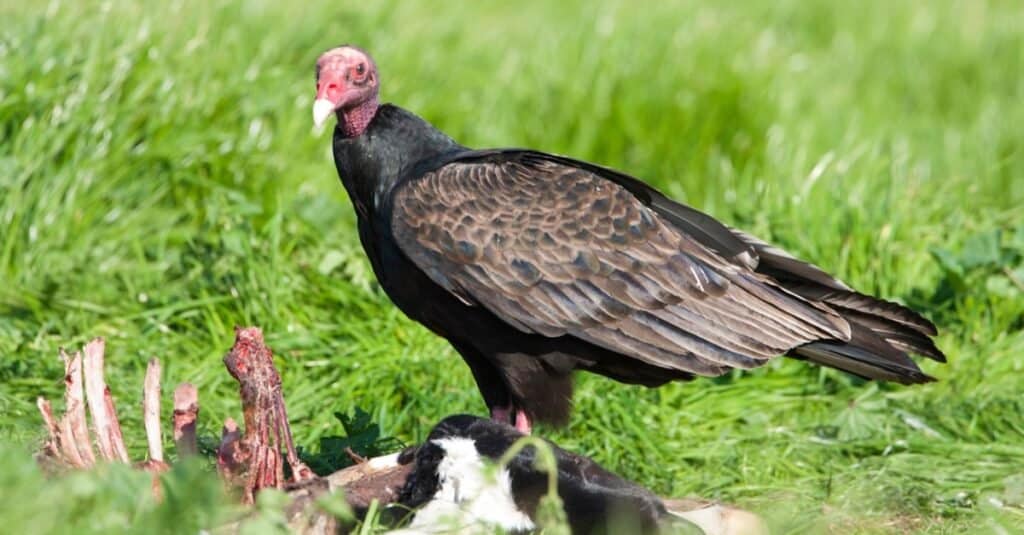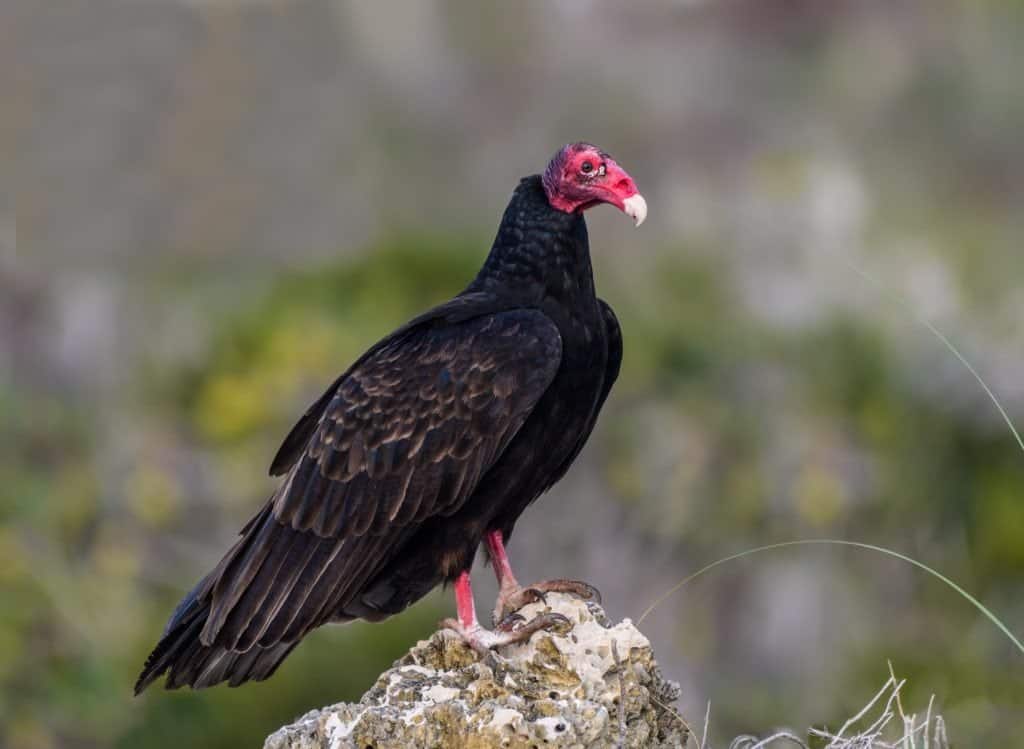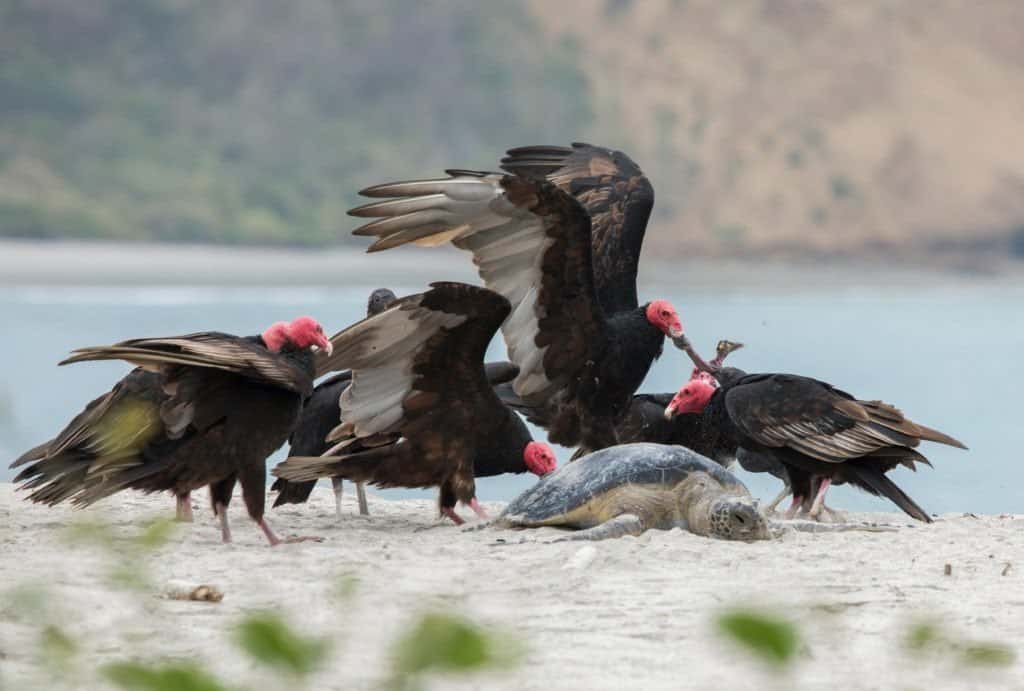Turkey vultures are some of the most common vultures in North and South America. They are easily identifiable with their red head and neck (resembling turkeys) and are often seen flying on thermals in their classic lazy loops. Often spotted around roadkill and sitting on electrical towers, turkey vultures are some of the most common large birds someone is likely to see while out for a drive. From a distance, they may seem small, but is that the case up close?
Let’s take a look at these birds and learn: just how big are turkey vultures? How big are their wingspans?
How big are turkey vultures?

On average, turkey vultures grow to a length of 32 inches (2 foot 8 inches), weigh up to 3 lbs, and have wingspans that can reach nearly 6 feet. They reach maturity around two years, at which point their heads fully redden, and they reach their full weight and size.
Although they aren’t incredibly tall or heavy birds, they significantly outmatch any smaller birds in their ranges (like finches or sparrows) and are considered to be birds of prey. Their wingspans can reach the length of a man, comparatively long for their relatively small body size and weight. They are long-lived birds, regularly living to 20 years in the wild and up to 24 in captivity.
Males and females have similar measurements across the board, differentiating them from most other birds of prey. Their lack of sexual dimorphism likely has to do with their diet (from an evolutionary perspective), especially since they don’t need to hunt as an eagle or hawk would.
What do turkey vultures look like?

Turkey vultures have the name because of their red-head and brown body that resemble wild turkeys.
©Agami Photo Agency/Shutterstock.com
Turkey vultures are some of the most easily identifiable birds in North America. They have red heads and necks (blue-gray in juveniles) with brown plumage across their bodies. Their feather color and bare red-heads are the reason they can be confused with turkeys, although they are significantly smaller and differently shaped than a turkey is.
On their wings, they have “fingertips” that can help in identification, separating near the ends of their wings. The underside of their wings is white or grey, and their tails extend well past their legs. Their legs are often pale red or gray but will usually appear white. This is a result of their habit of urinating on their legs (urohidrosis) as a way to cool down (something done rather often with birds), and the white streaking is the dried uric acid.
Why is their wingspan so large?

Turkey vultures have large wings so they can ride thermals in their search for food.
©FotoRequest/Shutterstock.com
Turkey vultures are about the same size as their counterparts, the black vulture, except their wingspan is about 1-1.5 feet longer. This is likely due to the turkey vulture’s need to soar long distances in search of food. They are notably bad flyers, however, and struggle to stay aloft without the help of thermal columns that lift them up. Their increased wingspan likely allows them to catch these thermals easier while they are looking for food.
Black vultures aren’t good flyers either, but their more compact bodies allow them to be a bit more powerful in their wingbeats. The turkey vultures increased wingspan could allow them to keep up.
Are turkey vultures good flyers?
Vultures are generally poor flyers. Their main weakness is with their flapping. They can’t flap with much power or speed, forcing them to find other ways to go long distances in search of food. But you might be wondering: If they are poor flyers, how are they then able to stay in the air so long?
The main tool that turkey vultures (and most other vultures) use to assist in flying is thermal columns. Thermal columns are essentially pillars of hot air that shoot up into the sky. When a vulture hits one of these columns, it can use its large wingspan to catch the hot air up. Since they don’t have to flap to stay aloft, this way of flying is easier and less strenuous for them.
An easy way to distinguish a vulture flying in their air is their classic “wobble.” This wobble is seen in their circling patterns and while at low altitudes. The wobble is known as “contorted soaring,” and it’s the vultures utilizing small-scale turbulence to stay in the air longer. The wobbling is the air currents moving them around, similar to bouncing on the back of a bus.
Why do turkey vultures circle?

Vultures circle to find food, not to wait for living things to die.
©Ana Dracaena/Shutterstock.com
Turkey vultures circle, as do many other vulture species. There are a few reasons this may occur. It’s important to note, however, that this isn’t the vultures waiting for an animal to die. This is often how they are depicted in movies, but isn’t generally true. If a vulture is circling, they are usually looking for food and haven’t found it yet. The circling is the vultures using the thermals to cover ground without using too much energy.
Another reason a vulture will circle is that it has found food, but it wants to make sure that there are no predators nearby. This isn’t as necessary in eastern North America since few scavengers could scare away a vulture, but it could be very valuable for Old World vultures in Africa and Asia. Checking out a kill for a few moments could be the difference between being attacked by a pack of hyenas.
Turkey vultures are unique in the vulture world since they have an incredibly developed sense of smell. Most vultures don’t have the ability to smell and rely purely on sight to find carrion. A turkey vulture has one of the most attuned senses of smell in all the bird kingdom, making them exceptional hunters. In fact, their sense of smell is so good that black vultures will often circle above the turkey vultures, waiting for them to pick up the scent of dead meat. Once a turkey vulture has found food, the black vulture will follow suit.
Where do turkey vultures rank in terms of their wingspan?
Turkey vultures have large wingspans, but they aren’t the longest in the world or even North America. In fact, the largest wingspan of any bird in North America is the cousin of the turkey vulture, the California condor. The California condor has a wingspan that can top 10 feet and weighs up to 20 lbs.
The turkey vulture is further down the list, likely around 7th place. On average, the osprey has a larger wingspan than they do, consistently coming in at 6 feet. On the other side, great gray owls have a slightly smaller wingspan than the turkey vulture. They average around a 5-foot wingspan.
The photo featured at the top of this post is © Agami Photo Agency/Shutterstock.com
Thank you for reading! Have some feedback for us? Contact the AZ Animals editorial team.






